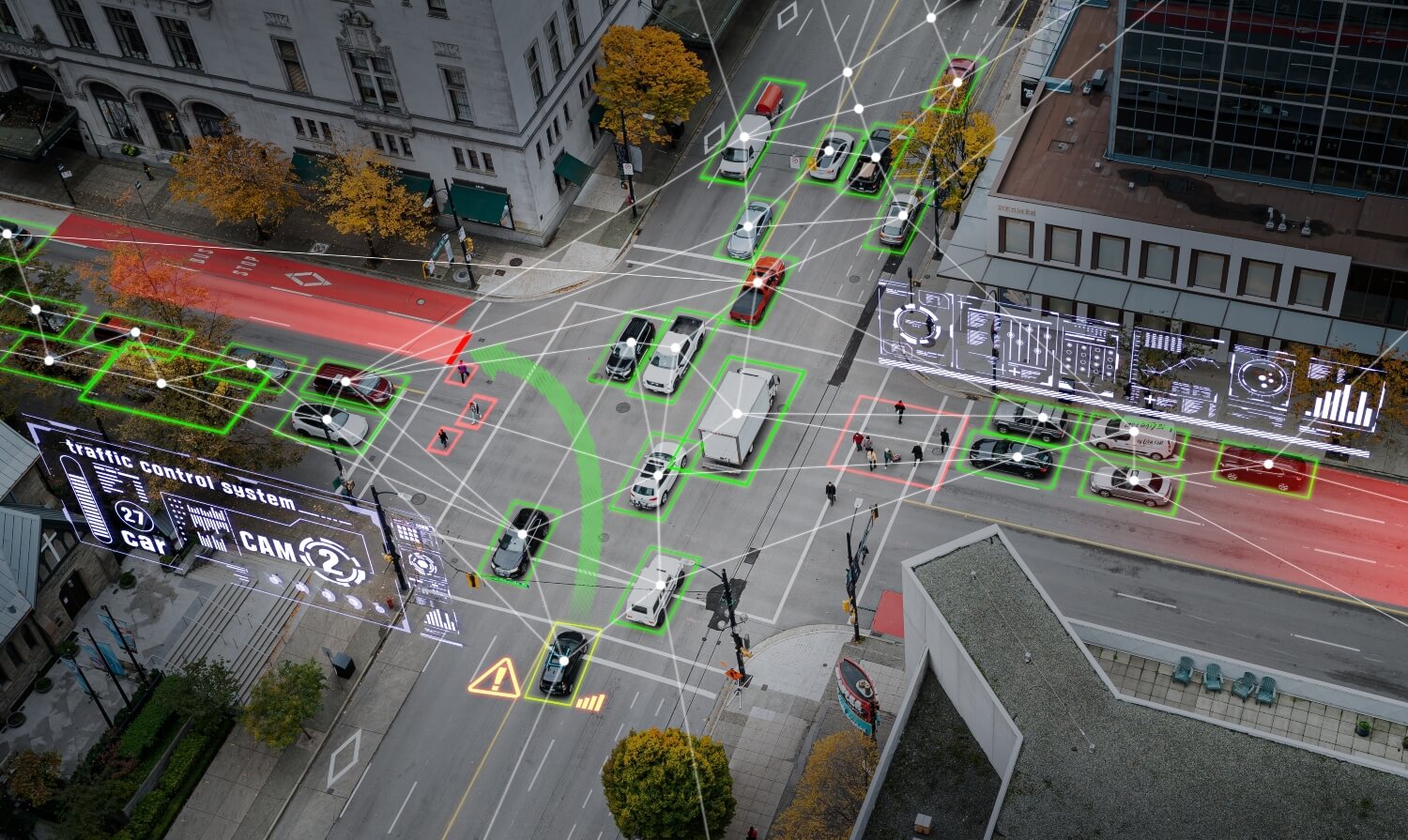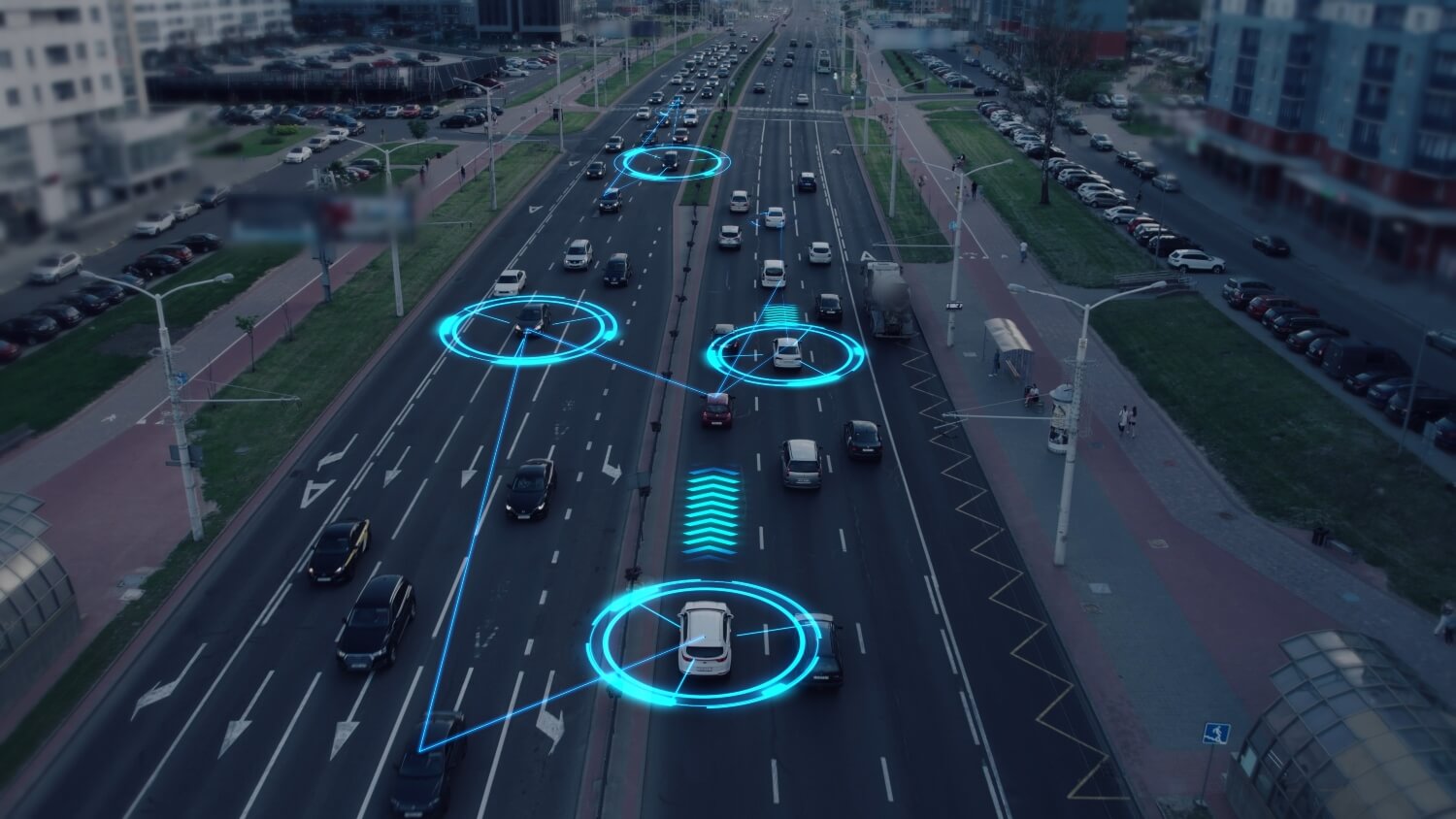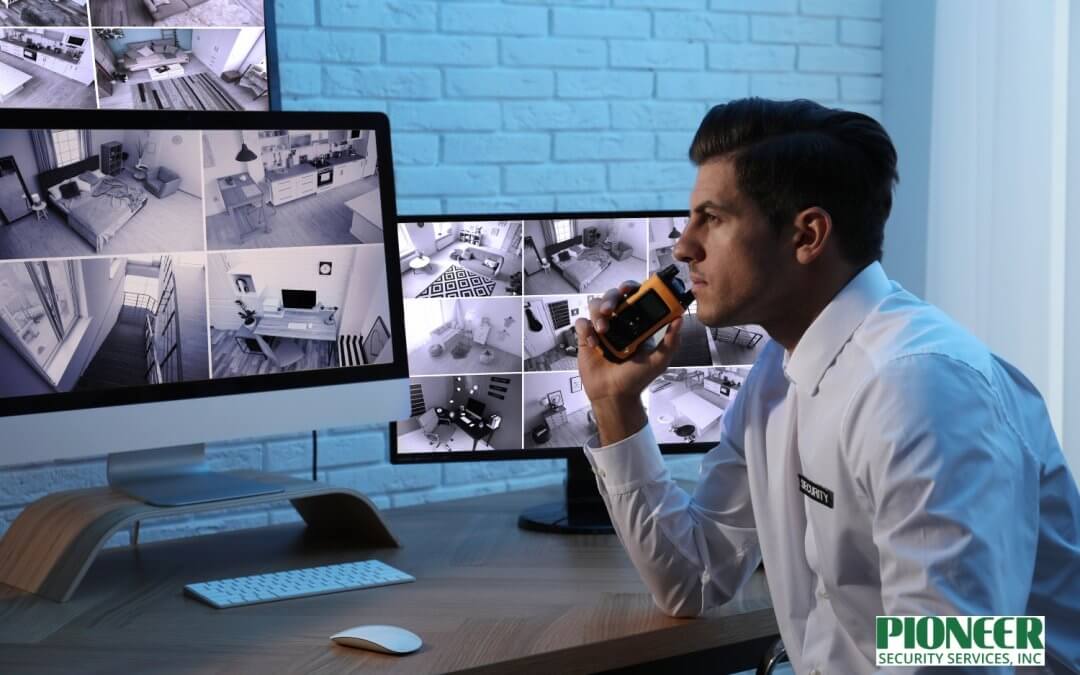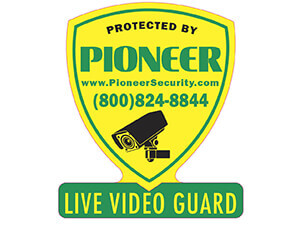With the advent of IoT integration, modern security has evolved beyond mere recording and monitoring. Businesses and homeowners now seek systems that can actively respond and alert in real time. The days of relying on outdated surveillance setups that struggle to keep pace with today’s rapid threats are over. The demand for more innovative solutions is now a necessity.
By integrating smart cameras, motion sensors, and connected devices, IoT enables active defense through passive monitoring. These systems detect unusual activity, send instant alerts, and even trigger actions like locking doors or turning on lights. Everything works together to put you in control of protecting your property around the clock.
In this guide, you’ll learn how IoT-powered surveillance works, the technologies behind it, and why this shift is changing the future of security.
Understanding IoT in Video Surveillance
The Internet of Things (IoT) is a network of interconnected devices, including cameras, sensors, and smart locks, that communicate over the internet to exchange data and perform tasks. In video surveillance, IoT turns passive cameras into active security tools that can analyze, alert, and respond instantly.
The Evolution of Surveillance
Unlike traditional CCTV systems that were limited to recording footage for later review, IoT integration has shifted surveillance to a proactive model. Devices now collaborate to detect and address threats in real-time monitoring, eliminating the need for manual review of hours of video. For instance, a smart camera can alert security staff to an intruder and simultaneously trigger a door lock, all without human intervention.
Core Benefits of IoT Integration
- Real-Time Monitoring: Instant alerts for suspicious activity, reducing response times and improving incident prevention.
- Remote Access: View live feeds and manage systems from anywhere using a smartphone, tablet, or computer.
- Scalability: Easily add cameras, sensors, or other devices without significant infrastructure changes, making it ideal for growing businesses.
- Cost Efficiency: Cloud-based systems can reduce hardware and maintenance costs compared to traditional on-site setups.
- Data-Driven Insights: Analytics provide valuable information for optimizing security protocols and business operations.
What Are The Key Technologies Powering IoT Integration
IoT integration relies on several advanced technologies that work together to create a seamless, intelligent surveillance system. Understanding these components is essential for anyone considering an upgrade to their security infrastructure.
Cloud Computing
Cloud platforms store and process large amounts of video data, removing the need for expensive on-site servers. They offer scalable storage, remote access, and automatic software updates, providing enhanced security and system reliability. Cloud-based video management systems (VMS) allow users to access live and recorded footage from any location, making it easier to monitor multiple sites.
Edge Computing
Edge computing processes data directly on cameras or nearby devices, reducing latency and bandwidth usage. This enables faster threat detection and allows systems to continue operating during network outages. For example, if a network connection is lost, edge devices can still record and analyze video locally, ensuring uninterrupted coverage.
Artificial Intelligence (AI) and Machine Learning (ML)
AI and ML analyze video feeds to identify patterns and threats. Applications include facial recognition, object detection, and behavior analysis, which can reduce false alarms and improve response accuracy. AI-powered analytics can distinguish between regular and suspicious activity, such as identifying a person loitering near a restricted area or detecting an unattended bag in a public space.
5G Connectivity
5G networks offer high-speed, low-latency connections, supporting real-time streaming of high-definition video and reliable communication between multiple IoT devices. This is especially important for large properties, smart cities, and remote locations where traditional wired connections are impractical.
Blockchain (Emerging)
Blockchain technology creates tamper-proof records of video footage, ensuring data integrity and security. By recording every access and change to video files, blockchain helps prevent unauthorized tampering and supports compliance with data protection regulations.
How IoT Integration Works
IoT integration transforms surveillance into a dynamic, interconnected system. Here’s how it works, step by step:
Step 1: Data Capture
Smart cameras and sensors collect video and environmental data, including motion, temperature, and sound. For example, a motion sensor might detect movement in a restricted area. At the same time, a camera records high-definition video of the event.
Step 2: Data Processing
AI-powered analytics processes the data at the edge or in the cloud to identify threats. The system can recognize faces, detect unusual behavior, or flag unauthorized access attempts. This processing occurs in real-time, enabling immediate action.
Step 3: Real-Time Alerts
When a potential threat is detected, the system sends instant alerts to security personnel or a monitoring center. Alerts can include live video feeds, location details, and recommended actions. This enables security teams to respond quickly and effectively.
Step 4: Automated Response
IoT devices can trigger automated actions, such as activating sirens, locking doors, or notifying law enforcement. For example, if a camera detects an intruder, the system can automatically lock nearby doors and turn on strobe lights to deter the individual.
Step 5: Data Storage and Analysis
Footage is stored securely in the cloud, with analytics providing insights for future improvements. Security teams can review incidents, generate reports, and use data to optimize store layouts, staffing, or access control policies.
What Are Its Applications Across Industries

IoT-integrated surveillance systems are transforming security and operations in many sectors. Here are some key industry applications:
Smart Cities
Cities use IoT surveillance for traffic management, crowd monitoring, and public safety. Cameras and sensors monitor intersections, detect accidents, and provide real-time data to emergency responders. This improves traffic flow, reduces congestion, and enhances public safety.
Retail
Retailers use IoT cameras and analytics for loss prevention, customer behavior analysis, and inventory tracking. Real-time alerts help prevent shoplifting, while analytics provide insights into customer movement and store layout optimization.
Healthcare
Hospitals and clinics utilize IoT surveillance for patient monitoring, ensuring hygiene compliance, and maintaining secure access control. Cameras can alert staff to patient falls or unauthorized access to restricted areas, improving safety and compliance.
Industrial
Factories and warehouses use IoT systems for asset protection, perimeter security, and environmental monitoring. Sensors detect unauthorized entry, monitor temperature or humidity, and help prevent equipment theft or damage.
Residential
Homeowners benefit from smart home integration, remote monitoring, and personalized security alerts. IoT cameras and sensors provide real-time updates on activity around the property, allowing for quick response to potential threats.
Real-World Case Studies
The following examples from diverse sectors demonstrate the quantifiable security and operational benefits of these integrated systems.
Retail: Reducing Shoplifting
A national retail chain implemented IoT cameras with AI analytics, resulting in a 30% reduction in shoplifting through real-time alerts and behavioral analysis. The system provided instant notifications to security staff, allowing them to intervene before losses occurred. Analytics also helped optimize store layouts by tracking customer movement patterns.
Smart City: Traffic Optimization
A city utilized IoT surveillance to monitor traffic flow, resulting in a 20% reduction in congestion and improved response times for accidents. Cameras and sensors provided real-time data to traffic management centers, enabling dynamic signal adjustments and faster emergency response.
Healthcare: Patient Safety
A hospital deployed IoT cameras to monitor patients, ensuring timely staff alerts for falls or emergencies. The system improved patient safety without compromising privacy, as cameras were configured to focus on movement and alert staff only when necessary.
Industrial: Asset Protection
A logistics company installed IoT sensors and cameras to monitor warehouse perimeters and sensitive storage areas. The system detected unauthorized access attempts and environmental changes, such as temperature spikes, helping prevent equipment theft and product spoilage.
Residential: Smart Home Security
A residential community adopted IoT surveillance for common areas and entry points. Homeowners received real-time alerts on their smartphones, allowing them to monitor activity and respond to potential threats even when away from home.
Challenges and Considerations
While IoT integration offers many benefits, it also presents challenges that require careful management.
Data Privacy and Security
IoT systems collect vast amounts of data, which raises significant privacy concerns. Encryption for data in transit and at rest is essential. Transparent signage should inform individuals of monitoring, and systems must comply with data protection laws such as GDPR and CCPA. Regular audits and clear privacy policies help maintain trust and confidence.
Interoperability
Different IoT devices may use incompatible protocols, making integration challenging. Standardized APIs and middleware can ensure seamless communication between devices from other manufacturers. Choosing solutions that support open standards is essential for long-term scalability.
Cost Management
Initial setup costs for IoT surveillance systems range from $500 to $2,500, with monthly fees ranging from $40 to $120, depending on the system’s size and features. However, long-term savings from reduced human resources and improved efficiency often offset these expenses.
Regulatory Compliance
Adhering to data protection laws is critical to avoid fines and maintain trust. Businesses should work with providers who understand regulatory requirements and can help implement compliant solutions.
Future Trends and Innovations
The future of IoT in surveillance is promising, with new technologies set to enhance capabilities and drive further adoption.
Advanced AI and Machine Learning
AI will enable predictive analytics, allowing for the anticipation of threats before they occur. Autonomous systems will make decisions independently, further reducing response times and enhancing accuracy.
Integration with Smart Technologies
IoT surveillance will integrate with drones, wearables, and smart locks to create a comprehensive security ecosystem. For example, drones can provide aerial surveillance, while wearables can alert staff to emergencies in real time.
5G and NB-IoT
5G will support high-definition streaming and real-time communication between devices. At the same time, Narrowband IoT (NB-IoT) will enable surveillance in remote areas with low-power connectivity.
Blockchain for Data Integrity

Blockchain will ensure tamper-proof video records, increasing trust in surveillance data and supporting compliance with legal requirements.
Sustainability
Energy-efficient devices and green practices will reduce the environmental impact of surveillance systems. Solar-powered cameras and low-power sensors are becoming more common, supporting sustainability goals.
Frequently Asked Questions
What is IoT integration in video surveillance, and how does it differ from traditional CCTV?
IoT integration connects cameras, motion sensors, smart locks, and other devices via the internet, enabling them to work together for real-time threat detection and automated response. Unlike traditional CCTV, which only records footage for later viewing, IoT-enabled systems actively alert users and can trigger actions, such as locking doors or sounding alarms, as incidents occur.
What are the main benefits of using IoT-powered surveillance systems?
Significant benefits include real-time alerts, remote access to live and recorded video, easy system scalability, cost savings through cloud storage and automation, and actionable data from built-in analytics that support better security decisions.
How do IoT surveillance systems ensure data privacy and security?
These systems utilize encryption for data in transit and at rest, enforce user authentication, and comply with regulations such as GDPR and CCPA. Regular updates, security audits, and visible signage to notify individuals of monitoring are also best practices that help protect privacy.
What challenges should be considered when adopting IoT video surveillance?
Common challenges include device interoperability, upfront and ongoing costs, privacy and compliance concerns, and cybersecurity risks. Selecting providers that adhere to open standards and are familiar with regulatory requirements helps address these issues effectively.
In which industries and environments does IoT-connected surveillance bring the most value?
IoT surveillance delivers high value in smart cities (traffic control and public safety), retail (loss prevention and inventory tracking), healthcare (patient monitoring and access control), industrial sites (asset and perimeter protection), and residential spaces (smart home security and remote monitoring).
What emerging technologies are shaping the future of IoT surveillance?
Innovations include advanced AI for predictive threat analysis, integration with drones and wearables, faster connectivity through 5G and NB-IoT, blockchain for tamper-proof data logs, and sustainable technologies like solar-powered cameras and energy-efficient sensors.
Discover the Power of IoT-Enabled Security
IoT is revolutionizing live video surveillance by turning traditional systems into intelligent, responsive, and scalable solutions. With connected cameras, sensors, and smart devices, both businesses and homeowners benefit from real-time insights, faster response times, and greater cost efficiency. Challenges such as privacy and system integration persist. However, data showing reduced crime rates makes the overall impact undeniable.
PioneerSecurity brings this innovation to life with customizable IoT surveillance systems tailored to your unique needs. Call (800) 824-8844 or visit their website to see how innovative technology can elevate your security strategy today.



